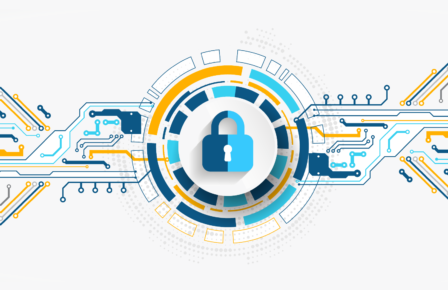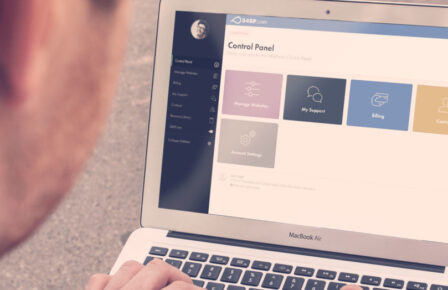Resources Covering the History of Modern Computing in Photos
 Columbia University Computing History
Columbia University Computing HistoryThe first truly modern computing machines were invented decades ago and their predecessors date back centuries. It is therefore unlikely that current students of computing or modern computer users have ever even heard the names of early computing devices – let alone know what they actually looked like.
The following document provides a list of resources that offer photographs, videos, drawings and other renderings which create a rich visual history of the modern computer. Please feel free to contact 34SP.com with any additional resources that should be added to the list.
- An Illustrated History of Computers Part I – An excellent visual computer resource with photos covering the period from the abacus to the Pascaline.
- An Illustrated History of Computers Part II – Covers the period from the stepped reckoner to Tabulating Machine Company.
- An Illustrated History of Computers Part III – Begins with the Harvard Mark I computer which was built as a partnership between Harvard and IBM in 1944 and continues through integrated circuits – also known as ”silicon chips”.
- An Illustrated History of Computers Part IV – Starts with the Electronic Numerical Integrator and Calculator also known as ENIAC and concludes with the personal computer.
- Computer History Collection of the Smithsonian – The Smithsonian National Museum of American History information page on the Computer History Collection. Includes photos of the IAS Computer circa 1952, the Digital Equipment Corporation PDP-8 circa 1965, and the Altair 8800 Computer circa 1975 among others.
- Computer History Exhibits Photo Tour from Stanford University Computer Science including links to photos of the Apollo Program Guidance Computer and Logic Modules, the IBM PC Model 5150, and the IBM Card Programmed Calculator (CPC) circa 1960.
- The Obsolete Technology Website – Has several highly informative and interesting sections on the site. You can view photos of over 100 old computers which can be accessed via a timeline. You can also view vintage computer ads to see how the computers were marketed back in the day.
- Time Magazine Photo Gallery of Vintage Computers – An excellent series of 20 photos beginning with the NEAC 2203 circa 1960 which was manufactured by the Nippon Electric Company (NEC). You can also see a photo of a punch card created by IBM in 1937 for use by the Social Security Administration. Be sure to see the core memory photo which shows rings of ferrite suspended in a grid of wires which could retain information even when the electricity was turned off – a huge breakthrough at the time.
- Photos from Core Memory: A Visual Survey of Vintage Computers – A series of 16 photos taken by photographer Mark Richards at the Computer History Museum in Silicon Valley. The photos capture historically important computers which are excerpted from Mr. Richard’s book.
- Vintage Home Computers – A cornucopia of home personal computers used for gaming from Retro Gaming Collector. Think: Atari, Commodore, and TRS-80 type machines. A good collection of photos and information. Also includes the specifications of each machine.
- The Old Computer Museum Online – A collection of computers and photos grouped chronologically from the 1950’s to 1999. You can also view computers by country – which is a fairly rare feature.
- Old-Computers.com – You can browse computers by name, manufacturer or year. Other interesting historical computer information such as online owner’s manuals for selected machines, vintage advertising and vintage television ads. A deep site with a wide variety of great photos and historical information.
- Photo Gallery Page of the Vintage Computer Festival (VCF) – A series of photographs of modern day collectors who have brought their vintage computer equipment to various editions of the Vintage Computer Festival. Photos include such items as: a Sharp PC-5000 new in the box, a fully functioning Control Data Corporation Cyber 960, and a complete line up of vintage Apple products including an original Lisa.
- Vintage Computing and Gaming – A wide ranging blog with an enormous amount of computer history and photographs. Recent articles include information and photographs of the DEC Rainbow 100, an original Apple I, an amazing early version of a touchpad computer named the Atari CX77 Touch Tablet, and information about vintage computer software and emulators.
- The Vintage Computer – A well documented collection of vintage personal computers. Simply view the left hand navigation list and select the manufacturer and model you are interested in. Choose from among Apple II machines, Commodore hardware, Atari, Compac, Heathkit, IBM, MITS, and TRS-80’s to name just a few. Almost all computers have detailed specifications and photographs.
- The Classic Computer Magazine Archives – Links to an array of magazines from the 1970’s to the 1990’s including: Antic Magazine, published 1982-1990; STart magazine, dedicated primarily to Atari ST computers, published 1986-1991; Creative Computing Magazine, published 1974-1985; and Compute! Magazine, published 1979-1994; the list also includes many others. A great historical resource.
- The Antique Chip Collectors Page – Photos and information on collectible computer chips including: the Intel 4004, MOS 6502, Motorola 6800, the RCA 1802 and Rockwell PPS-4, also the NEC uPD751 and National Semiconductor IMP-00A. Most series of chips include the chip name, the chip package, the on-chip identification, a photograph and general comments.
- Facts and Stories about Antique Computers – An amazing list of resources gathered together by Mr. Ed Thelen.
- Digital 60 Manchester – The Manchester Small-Scale Experimental Machine (SSEM), nicknamed Baby, was the world’s first stored-program computer. Developed by Frederic C. Williams and Tom Kilburn at the University of Manchester, it ran its first program on June 21, 1948. This is a website devoted to the preservation of this history.
- IBM Turns 100 – A nice visual retrospective from CNN on the 100th anniversary of IBM. The company was founded on June 16, 1911, in New York City as the un memorably named Computing-Tabulating-Recording Company. In 1924 the company was renamed International Business Machines – or for short just IBM. Includes photos of Harvard’s original Mark I computer from 1944, the IBM 701, and IBM’s first ever desktop computer – the IBM 1130.
- Columbia University Timeline of Computing – Has a very nice photo of the world’s most powerful computer in 1954, the IBM Naval Ordnance Research Calculator (NORC). The NORC was considered the very first supercomputer. It was constructed at Columbia University’s Watson Scientific Computing Laboratory between 1950 and 1954. You can also view a number of interesting photos on the page entitled The Columbia University Computer Center in 1965. Contains photos of an IBM 7094, an IBM 7040, the keypunch room, and photos of the magnetic tape storage area.
- The IBM Archives – Contains a wealth of information on the company and its products over the years with many accompanying photographs. A good starting point may be the section on IBM mainframes which contains photos of pristine installations (perhaps marketing photos) for many of the early IBM mainframe models.
- Historic Computer Images – A great series of U.S. military computer photos compiled by Mike Muuss. Several early and large military mainframes and personnel.
- Starring the Computer – Just for fun here is a long list of motion pictures and television programs that have used a computer as part of the story line. For example you can view the long list of films and television episodes which used the IBM AN/FSQ-7 computer to dramatize their story. The AN/FSQ-7 was the largest computer ever built and was used to track and intercept enemy bombers during the Cold War. You can see it in action in the futuristic ‘Westworld’, the classic war strategy thriller ‘War Games’, ‘Austin Powers: The Spy Who Shagged Me’ and numerous television episodes as well.
Vintage Computer Videos
 U.S. Army Photo
U.S. Army Photo- The EDSAC Film (1951) – Simply unbelievable moving images capturing one of the very first computers at work. If you have never seen an old-school computer performing its calculations, this is the film to see. Using paper ribbons as input, the EDSAC is seen from start to finish and narrated by Professor M.V. Wilkes.
- Videos about Computer Artifacts, Input from Experts, and Tours of Computer Installations – Links to a series of videos showing vintage computer equipment which has been restored. Included is video of the IBM 1401 and IBM 1403 machines, the IBM 650 and the IBM 305.


